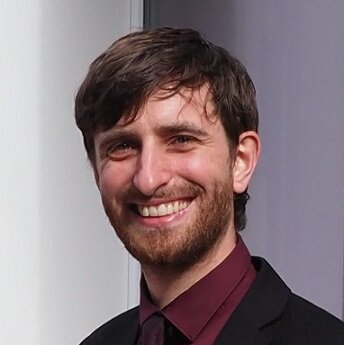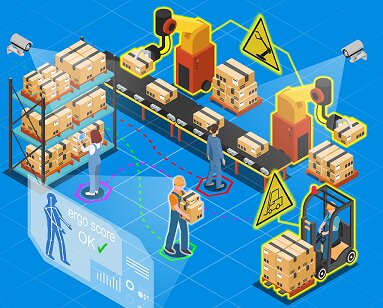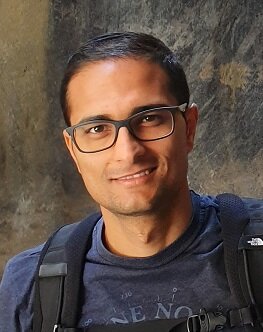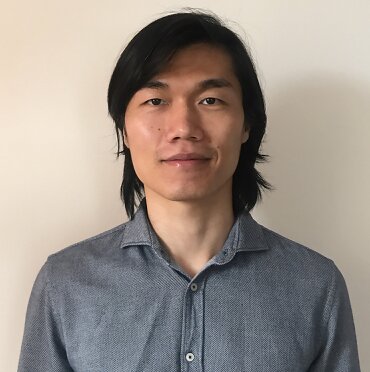PhD defences in 2021
Find the archive of concluded doctoral research
Biologically-Inspired Radar Sensing for Robotic Perception, Navigation and SLAM (03/12/2021)
Girmi Schouten
- Friday 3 December 2021
- 4 pm
- Promotor: prof. Jan Steckel
- Public defence on campus and online
- Faculty of Applied Engineering
Safety Tracking with Range Camera Fusion (02/12/2021)
Izaak Van Crombrugge
- Thursday 2 December 2021
- Promotors: prof. Steve Vanlanduit & prof. Rudi Penne
- Faculty of Applied Engineering

Abstract
In this doctoral research, dr. Izaak Van Crombrugge investigated how to improve worker safety using depth cameras. These are cameras that measure the depth for each image pixel. To avoid accidents at work, employers can track the position of all personnel in the room and adjust the behavior of the machines.For example, a crane dropping a heavy container on personnel standing underneath can be prevented. By using depth cameras, the tracking is very reliable. In addition the system is completely anonymous so the privacy of the workers is not being invaded.
In his research, dr. Van Crombrugge also takes into account the posture of the admitted workers. From the camera images, a simple 3D skeleton can be detected. The camera then automatically calculates the ergonomic score for this posture based on the angles of the joints. In this way ergonomic problems can be detected easily.
To correctly align the images of different cameras, extrinsic calibration is needed. In his doctoral research, dr. Van Crombrugge provided two convenient calibration methods to find the pose of a set of cameras. No overlap is needed between the different fields of view, allowing for efficient camera placement.

Dr. Van Crombrugge developed a robust method for people tracking using range cameras: Density Map Tracking with Blob Splitting (DMT-BS). Multiple cameras can easily be added to resolve occlusions and to enlarge the observed area. The method can be used to track any moving object in an otherwise static environment, as the detection does not rely on a specific human model.
Its strength lies in its simplicity, making the behavior predictable and opening possibilities to be implemented on low-cost hardware. From the point cloud delivered by the depth sensor, a 2D density map is formed in floor coordinates followed by basic 2D tracking. Robustness is enhanced using a simple but effective blob splitting technique. Tests show that the camera position, depth noise, and extrinsic calibration errors have little influence on the tracker’s performance. The proposed method was tested on three depth tracking datasets, reaching significantly better MOTA (Multiple Object Tracking Accuracy) scores when compared to two state-of-the-art depth-based trackers.
Towards a targeted optimization of electrocatalysts by combining electrosynthesis with in-situ electron paramagnetic resonance (30/09/2021)
Sander Neukermans
- Thursday, 30 September 2021
- 5 pm
- Promotors: prof. Tom Breugelmans & dr. Jonas Hereijgers
- The public defence will take plase both on campus and online.
- Faculty of Applied Engineering
Improving Scalability of Large Scale Agent-Based Simulations (05/07/2021)
Stig Bosmans
- Monday 5 July 2021
- 3 pm
- Promotors: prof. Peter Hellinckx & prof. Joachim Denil
- The public defence will be held on campus and through live streaming.
- Faculty of Applied Engineering - electronics-ICT
Angle of Arrival Estimation for Low Power and Long Range Communication Networks (11/05/2021)
Noori Bni Lam
- Tuesday, 11 May 2021
- Promotors: professor Maarten Weyn & professor Jan Steckel

Abstract
The Internet of Things (IoT) is a concept that has been evolving in the last decade to provide an internet connectivity to objects of everyday life. The versatility of these objects knows no limits. Whether they’re traditional devices such as bicycles, motors, home appliances, tools of any kind, or modern devices such as sensors (e.g. temperature, humidity, air quality, motions, health monitoring, etc), IoT devices are expected to be deployed massively in the near future. Besides this large amount of IoT devices, most of these devices are also mobile and thus require a means of tracking their location.
Navigation solutions such as GPS can be used for the localization purposes. However, GPS modules are considered power-hungry receivers, which makes them inappropriate for low power operations. Furthermore, the GPS system is designed to be used in open sky conditions, and so it is severely limited in strong attenuation environments, with little or no service in dense urban canyons or indoor environments.
Consequently, the localization aspect of the IoT devices is still under enormous developments. These developments vary in terms of complexity, accuracy, and cost effectiveness. In this thesis, Dr. Noori Bni Lam proposes low cost and low power localization systems for IoT devices while maintaining a high accuracy.
Hybrid Timing Analysis Based on a Block-Isolation Technique (22/04/2021)
Haoxuan Li
- Thursday, 22 April 2021

- Promotors: professor Paul De Meulenaere & professor Peter Hellinckx
Abstract
Real-time
embedded systems can be found easily in our daily lives. They are made to
complete a simple function within a given time frame. For example: in automotive
engineering the duty of one real-time embedded system is to control the brakes.
Once the brake function starts, the car must be stopped within a certain amount
of time. Otherwise, an accident might happen.
Understanding whether a system can meet the timing requirements at the early design stage can help avoid design iteration and reduce the design cost. Timing analysis techniques are developed to obtain the timing behaviour of a system.
During the design phase of a real-time embedded system, it is critical to know whether the timing behaviour of the system can meet the timing requirement. The process of deriving the timing behaviour of such systems is known as timing analysis.
One type of the current timing analysis techniques requires much engineering cost to derive reliable timing analysis results. Another type of techniques require less engineering cost, but the results are not very reliable.
In this thesis, Dr. Haoxuan Li proposes a timing analysis technique that combines both types of techniques. The proposed timing analysis techniques can be used by engineers to derive reliable timing analysis results at an affordable cost.

A Multiscale Approach to Model Thermo-Hydro-Mechanical Behaviour of non-reinforced Concrete (01/04/2021)
Saeid Babaei
- Monday 29 March 2021
- Promotors: Prof. Dr. Bart Craeye & Prof. Dr. Gunther Steenackers
Abstract
The main driver for this study was to investigate the thermo-hydro-mechanical (THM) behaviour of cementitious engineered barriers, in particular, the barrier for high level nuclear waste containers considered in the Belgian deep geological disposal program.
This thesis proposes a stepwise, multi-component and multiscale framework to model thermo-hydro-mechanical (THM) behavior of cementitious materials starting from microstructural modelling by representing microstructure of the material based on its chemical composition and reaction condition (curing, age, temperature, etc.).
This modelling tool is then coupled with an algorithmic scheme adapted to convert such microstructure to a representative pore network and simulate transport properties. Regarding the mechanical and thermal properties, including elastic modulus, coefficient of thermal expansion and heat conduction coefficient a micromechanical scheme has been implemented by means of numerical homogenization.
Finally, a multiscale and microstructure-informed THM simulationof an engineered barrier for high level nuclear waste container is carried out, where the material parameters are derived using the hydro-mechanical framework. The main objective of this application is to identify spatial regions of the engineered barrier that are prone to crack formation and propagation due to evolving thermal load and its consequences to hydro-mechanical behaviour of the barrier.
Design Optimization of Air Distribution Systems in Non-residential Buildings (25/02/2021)
Sandy Jorens
- Thursday 25 February 2021
- 10 a.m. (UTC+1)
- Promotors: Prof. Ivan Verhaert & Prof. Kenneth Sörensen
- Online PhD defence: Due to the current circumstances, the public defence will be available through live streaming, using Microsoft Teams. Please confirm online your presence before 20 February 2021. You will receive a link to participate to the online public defence.
- Faculty of Applied Engineering
Biorefinery concept in paper recycling: modelling, verification and prediction of bleaching process (13/01/2021)
Giorgio Tofani
- Wednesday January, 13 2021
- Promotors: Prof. Serge Tavernier & Prof. Iris Cornet
Abstract
The fibres from recycled paper are mainly used to produce newsprints, magazines and packaging materials. Depending on the application of the paper product, the fibres must have different properties (e.g. length and brightness). For example, newsprints require a particular level of brightness. The typical industrial process step to reach such brightness is called bleaching.
Nowadays, the composition of recycled paper is changing because our lifestyle is changing. We are reading fewer newspapers, and e-commerce is increasing. So, the demand for packaging products for deliveries is increasing. Therefore, low-quality fibres, which are more difficult to bleach, will have to be used for newsprint production.
The paper recycling industry also generates several waste streams that are currently either recirculated in the process, converted to low-value products or disposed of in a landfill.
This doctoral work focused on two targets:
- Understand the differences between the fibre types to the bleaching process and develop a mathematical equation to estimate the brightness of a recycled paper when its amount and types of fibres are known. In this way, it would be possible to predict the bleachability of a sample of recovered paper.
- Recover chemicals and materials from two waste streams generated respectively during paper recycling and cardboard recycling.
Conclusions
The different fibre types have diverse reactivity to the bleaching process, and they mutually influence each other during this treatment. A mathematical equation, called multiple linear regression, was developed and permitted to estimate the brightness knowing the fibre composition of recovered paper. More research can be considered to improve the mathematical equation.
Recycled filler, a mixture of salts and clays, was recovered from the waste generated during paper recycling. This material can be recycled and used in papermaking. Moreover, two chemical compounds (lignin and hydrocarbon derivatives) were retrieved from the waste generated during the recycling process of cardboard. These chemicals have a wide range of applications. For example, lignin can be used in the asphalt industry.